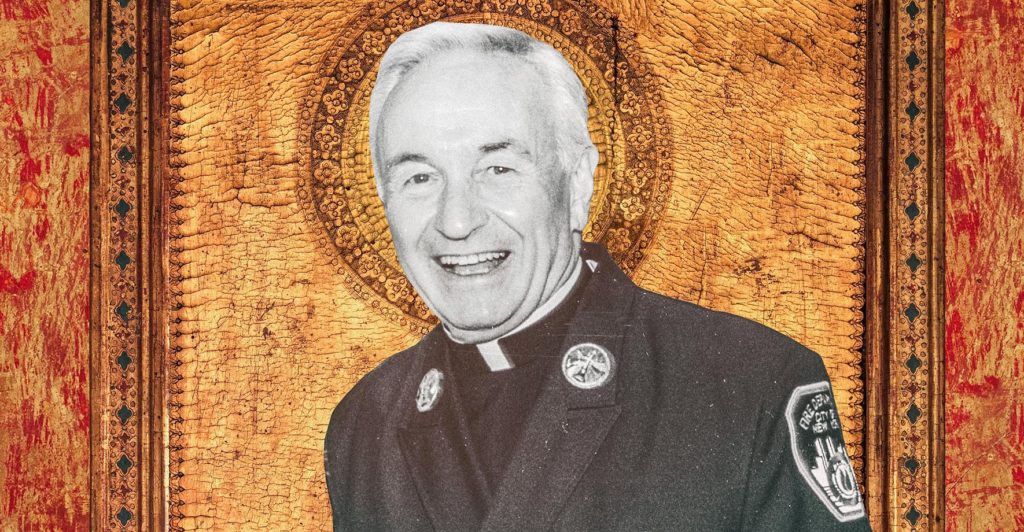In the News: Apocalypse, Saints & Breadsticks
A round-up of recent religion news.
Our favorite reading experience of the month was Helen Rosner‘s comprehensive ode, Dear Olive Garden, Never Change, published by Eater
 There are two globally renowned olive gardens: Gethsemane, the grove where Jesus and his disciples prayed the night before his betrayal and crucifixion, its agony painted by Gauguin and by hundreds of other painters, and the fictional Tuscan hillside that lends its name to Olive Garden, a massive restaurant chain with more than 800 locations in North America. The two appear to be unconnected: According to Darden Restaurants, owner of the Olive Garden chain, the phrase is intended to call to mind ideas of the olive harvest and Tuscan authenticity, not the final, anguished night of a prophet, dark hours spent in prayer, wrath, and silence.
There are two globally renowned olive gardens: Gethsemane, the grove where Jesus and his disciples prayed the night before his betrayal and crucifixion, its agony painted by Gauguin and by hundreds of other painters, and the fictional Tuscan hillside that lends its name to Olive Garden, a massive restaurant chain with more than 800 locations in North America. The two appear to be unconnected: According to Darden Restaurants, owner of the Olive Garden chain, the phrase is intended to call to mind ideas of the olive harvest and Tuscan authenticity, not the final, anguished night of a prophet, dark hours spent in prayer, wrath, and silence.
We also loved seeing these two pieces in the Los Angeles Review of Books this month.
First, Recline of the West by Benjamin Aldes Wurgaft
Lying down on my analyst’s couch I first feel my body against the upholstered surface, and then, in a transition once novel and now familiar, my consciousness moves from my skin to the weight of my body. When I speak I can feel my voice in my throat and in my chest. In certain moods my eyes dart around the room, and fasten on a painting (a Chagallish cow frozen in mid-leap above the couch, next to the window), or a plant in its pot. But more often than not, even as my eyes half-focus on the track lights on their rails, my attention is internal. It is not that the rest of the world, or the rest of my life, vanishes for 50 minutes. Rather, by reclining I shift my perspective on that world and that life, and by reclining next to my analyst’s chair, observed but not observing, I literalize the idea that I may not be the foremost expert on my own experience. Time develops a different thickness, consecrated to a purpose, and I am reminded of the lovely short book, The Sabbath, in which Rabbi Abraham Joshua Heschel suggested that the Jewish people had built a cathedral out of time, rather than out of brick and mortar.
And second, Philosophy and the Gods of the City by Jon Baskin who generously opens his review of Benjamin Wurgaft’s book Thinking in Public by citing Wurgaft’s recent Revealer article “The Call to Theory“
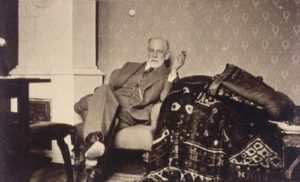 Thinking in Public goes even further: it offers a provocation not just to partisan intellectuals but to all of us who claim that philosophy or the arts have the potential to enrich public life. True to his promise to avoid normative pronouncements, Wurgaft ultimately leaves open the question of whether thinkers — as philosophers or as public intellectuals — have played anything like the role often claimed for them in the progress of history or the enlightenment of mankind. “After the experience of our generation,” wrote Strauss in 1954, “the burden of proof would seem to rest on those who assert rather than on those who deny that we have progressed beyond the classics.” One could imagine someone plausibly advancing a similar challenge today: how would we thoughtfully respond to it?
Thinking in Public goes even further: it offers a provocation not just to partisan intellectuals but to all of us who claim that philosophy or the arts have the potential to enrich public life. True to his promise to avoid normative pronouncements, Wurgaft ultimately leaves open the question of whether thinkers — as philosophers or as public intellectuals — have played anything like the role often claimed for them in the progress of history or the enlightenment of mankind. “After the experience of our generation,” wrote Strauss in 1954, “the burden of proof would seem to rest on those who assert rather than on those who deny that we have progressed beyond the classics.” One could imagine someone plausibly advancing a similar challenge today: how would we thoughtfully respond to it?
We’re also very excited to read Peter Manseau‘s new book, reviewed for NPR by Genevieve Valentine: ‘The Apparitionists’ Raises the Specters That Haunted America
Of course, like any good history, The Apparitionists also has a distinct air of the present. We’re reading about a religion so new that many Americans worried it was necromancy, but we’re also reading about a time in which new technologies suddenly upended the way people thought about communication, war upended the way people thought about life and death, and unprecedented access to things — newspapers, tourism, “objective” photograph portraits — upended the way people thought about what was true. (Called to the stand to testify about the veracity of his exhibits, Barnum presciently announces a capitalist cri de coeur: “They paid their money, and they had their choice.”) The past makes its eddies into the quaintly out-of-date, but it always brings us back to the present.
And we hope you’ll take the time to listen to The Revealer‘s publisher, Angela Zito discuss “religion as media” on the Online Gods podcast
 Online Gods is part theoretical exploration into some of the key concepts in the anthropology of media, and part research into how increased online interaction is changing the public sphere. Taking India and the India diaspora as its focal point, the podcast continues in the great anthropological tradition of bringing the global and the specific into conversation with one another as it analyses what online discussions do to political participation, displays of faith and feelings of national belonging. We are also intrigued as to whether a podcast can produce ethnographic theory. We believe It is possible to be both sophisticated and yet comprehensible, and that the spoken form can bring forth an accessibility that is sometimes missing from the written form. We even wonder whether academic podcasting might herald a technologically-enabled return to the centrality of oral traditions in intellectual exploration – can podcasting weaken reading’s hegemonic hold on consumption of academic knowledge? Online Gods is a key initiative of the project ONLINERPOL and is cohosted with HAU Network for Ethnographic Theory. This podcast is hosted by Ian Cook.
Online Gods is part theoretical exploration into some of the key concepts in the anthropology of media, and part research into how increased online interaction is changing the public sphere. Taking India and the India diaspora as its focal point, the podcast continues in the great anthropological tradition of bringing the global and the specific into conversation with one another as it analyses what online discussions do to political participation, displays of faith and feelings of national belonging. We are also intrigued as to whether a podcast can produce ethnographic theory. We believe It is possible to be both sophisticated and yet comprehensible, and that the spoken form can bring forth an accessibility that is sometimes missing from the written form. We even wonder whether academic podcasting might herald a technologically-enabled return to the centrality of oral traditions in intellectual exploration – can podcasting weaken reading’s hegemonic hold on consumption of academic knowledge? Online Gods is a key initiative of the project ONLINERPOL and is cohosted with HAU Network for Ethnographic Theory. This podcast is hosted by Ian Cook.
Also from the world of religious studies, this great resource for Teaching law and religion case study archive is curated by Winnifred Fallers Sullivan and Elizabeth Shakman Hurd, “building on and expanding our earlier work with Peter Danchin and Saba Mahmood in the “Politics of Religious Freedom” project.
A digital repository providing legal documents, analyses, and teaching resources for teaching religion and law. The modules below contain summaries and documents to help teachers and students analyze legal cases from around the world.
While elsewhere, Hurd published a piece going Beyond religious freedom: the Rohingya and the politics of religious rights in Myanmar for The Religion Factor
When policymakers describe the Rohingya’s plight as a problem of religious persecution and develop policy based on that understanding, they misconstrue the situation, overlook the real culprits, and risk exacerbating the violence against them and other vulnerable communities. To focus on intolerant religion as the problem, and religious freedom as the solution, blinds us to a larger and more complex set of challenges. An informed response requires that the international community grapple with a bigger picture and a longer global history.
And from over in literary studies, Tokens of Ruined Method: Does literary studies have a future? by Marco Roth for n+1 gave us a lot to think about
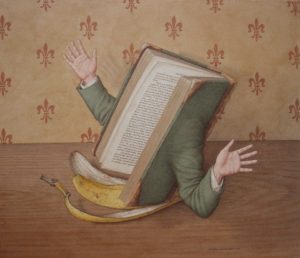
Illustration by Jonathan Wolstenholme
Regardless of its importance in theory, “theory” now represents an important set of experiences with which any new practical criticism will have to reckon. Nor can one discount the continued influence of religious or crypto-theological methods of textual interpretation that color many readers’ experiences of literature and culture — whether Evangelical fundamentalist typologies, Talmudic exegeses, or remnants of Midwestern Lutheran “Higher Criticism” — sustained by separate and dense networks of religious secondary schools and degree-granting colleges and universities that participate in institutions like the MLA. Anyone who has seen a superhero flick from the past ten years can tell you that most Americans encounter culture within an allegorical framework, and that this taste for allegory, nourished by the culture industry, also serves and is served by the historicist/contextualist paradigm, which teaches that literature itself is an encoded site of political or existential struggle.
We read a lot of good articles that were, in one way or another, about Islam.
Let’s do the funny stuff first: A Guide for Writing About Muslim Americans for the Struggling Male Reporter Who Doesn’t Want Anyone to Know Muslims Make Him Nervous by Zahir Janmohamed for McSweeney’s
President Trump announced another Muslim ban this past weekend and your editor wants a piece on the subject by 2 pm. She already rejected your pitch about why Riz Ahmed was your favorite character in Rogue One and now she wants you to talk to “everyday Muslims.”
It sucks, I know. And it’s confusing. Sunnis? Shias? And what’s that? There are Ahmadis, too? Of course, it doesn’t help matters that Kumail Nanjiani is being so damn unhelpful by not responding to the questions you tweeted at him about Islam.
Speaking of Kumail Najiani, his opening monologue from SNL on October 14 was extremely on point.
For more about Sikhs, Religious Symbols with a Hipster-Sikh Twist by Matt Sheedy for the Bulletin for the Study of Religion
There are many interesting threads to this story that I can’t touch upon here, including the metonymy of symbols, the slippery lines between “culture” and “religion,” and the discourse on Islamophobia, to name a few. What I’d like to focus on is the attempt to naturalize the meaning of “religious symbols” within public discourse, which I would claim is fuelled by essentialized definitions of religion that fail to account for its imbrications in culture, politics, and the like, along with its ever-shifting meaning.
And for a deeper dive on work about Islam, check out The Idea of the Muslim World: History and critique a new forum at The Immanent Frame
Drawing from provocations to think differently about the idea of the Muslim world and the Muslim country, this forum seeks to explicate the various ways in which these terms have been taken up in scholarship and political discourse more broadly. How have they been used to explain the political action of Muslims beyond the imperial context, that is, beyond their deployment as historically specific solutions to particular political problems? How has the notion of a “Muslim world” been utilized to mark civilizational and racial difference both historically and in the present? In what ways has the political calculus of the modern nation-state drawn upon idealized or demonized notions of “Muslim countries” and “Muslim actors” to enact its policies? What does it mean to take up these questions in the political present concomitant with a global rise in authoritarian rhetoric, racism, white nationalism, and Islamophobia?
These are but a few examples of questions this forum will engage. The responses draw from various fields of expertise and touch upon these larger themes concerning the racialization of Islam and Muslims, the construction of the “Muslim world” historically, and its relevance for political discourse surrounding the “Muslim country” in light of its contemporary iterations.
Rachel Aviv also does not struggle to write well about Muslims, as you can see in her recent piece for The New Yorker The Trials of a Muslim Cop
Luna Droubi, a lawyer who filed a class-action complaint last year on behalf of officers who have beards for religious reasons and have been penalized for growing them, told me that there was a “massive influx of Muslim officers who joined the N.Y.P.D. to help fight a branch of their religion that they disagreed with. But they’ve lost the energy to fight the battle, because they have to fight the battle of being Muslim on a day-to-day basis in their own work.”
We also read a number of very different stories about Christianity this month:
First, some history: Speaking Truth to Power is As American as Apple Pie by Marcus Rediker for LitHub
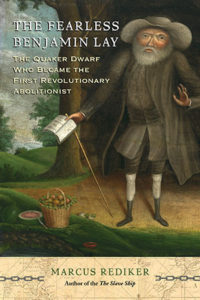 The debate about the suitability of Confederate generals as national heroes invites us to search the past for figures who better exemplify our declared ideals of democracy and equality.
The debate about the suitability of Confederate generals as national heroes invites us to search the past for figures who better exemplify our declared ideals of democracy and equality.
A little-known radical abolitionist from the 18th century, Benjamin Lay, deserves our consideration. Two generations before the emergence of an anti-slavery movement, Lay, a Quaker and a dwarf, endured persecution and ridicule as he fiercely attacked slavery and imagined a new, more humane way of life. Lay was born of humble origins in England in 1682, labored on the high seas, sailed to Barbados where he first witnessed the horrors of slavery, and then settled in Philadelphia—where he utilized dramatic guerilla theater in his fight against prominent Quaker (and other) slave owners. His long, lonely fight against bondage was nothing short of heroic. He deserves to be remembered and honored.
In the current moment Colin Kaepernick vs. Tim Tebow: A tale of two Christians on their knees by Michael Frost for The Washington Post
They’re both Christian football players, and they’re both known for kneeling on the field, although for very different reasons.
One grew up the son of Baptist missionaries to the Philippines. The other was baptized Methodist, confirmed Lutheran, and attended a Baptist church during college.
Both have made a public display of their faith. Both are prayerful and devout.
This is the tale of two Christian sports personalities, one of whom is the darling of the American church while the other is reviled. And their differences reveal much about the brand of Christianity preferred by many in the church today.
And Jelani Cobb brings us From Louis Armstrong to the N.F.L.: Ungrateful is the New Uppity for The New Yorker
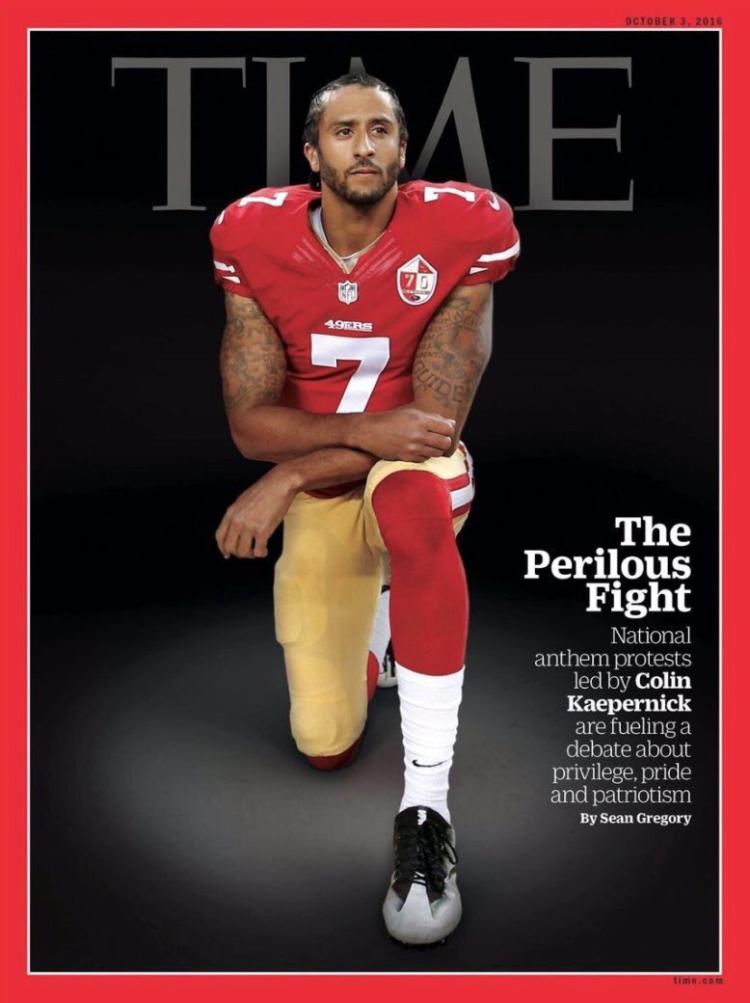 It’s impossible not to be struck by Trump’s selective patriotism. It drives him to curse at black football players but leaves him struggling to create false equivalence between Nazis and anti-Fascists in Charlottesville. It inspires a barely containable contempt for Muslims and immigrants but leaves him mute in the face of Russian election intervention. He cannot tolerate the dissent against literal flag-waving but screams indignation at the thought of removing monuments to the Confederacy, which attempted to revoke the authority symbolized by that same flag. He is the vector of the racial id of the class of Americans who sent death threats to Louis Armstrong, the people who necessitated the presence of a newly federalized National Guard to defend black students seeking to integrate a public school. He contains multitudes—all of them dangerously ignorant.
It’s impossible not to be struck by Trump’s selective patriotism. It drives him to curse at black football players but leaves him struggling to create false equivalence between Nazis and anti-Fascists in Charlottesville. It inspires a barely containable contempt for Muslims and immigrants but leaves him mute in the face of Russian election intervention. He cannot tolerate the dissent against literal flag-waving but screams indignation at the thought of removing monuments to the Confederacy, which attempted to revoke the authority symbolized by that same flag. He is the vector of the racial id of the class of Americans who sent death threats to Louis Armstrong, the people who necessitated the presence of a newly federalized National Guard to defend black students seeking to integrate a public school. He contains multitudes—all of them dangerously ignorant.
And Ben Austen writes in depth about The Trauma of Being a Black Activist in 2017 for Highline “
Every activist and organizer I know is traumatized in their own way,” DeRay Mckesson, one of the leading figures of the Black Lives Matter movement, said. “They’ve sacrificed job stability, relationships, educational opportunities to fight against a system that was literally killing people. They’re still processing those sacrifices. We are young people who are trying to figure out how to build a better world and still be healthy and sane and strong and loving and a partner and a brother and a sister.”
Speaking of trauma, As Overdose Deaths Pile Up, a Medical Examiner Quits the Morgue by Kathryne Q. Seelye for The New York Times
After laboring here as the chief forensic pathologist for two decades, exploring the mysteries of the dead, he retired last month to explore the mysteries of the soul. In a sharp career turn, he is entering a seminary program to pursue a divinity degree, and ultimately plans to minister to young people to stay away from drugs.
“After seeing thousands of sudden, unexpected or violent deaths,” Dr. Andrew said, “I have found it impossible not to ponder the spiritual dimension of these events for both the deceased and especially those left behind.”
And lastly, tragic but inspiring, Could Mychal Judge Be the First Gay Saint asks Ruth Graham for Slate
But just because Judge seems to fit perfectly the expanded definition of sainthood does not mean he is destined for the canon. A saint is not just someone who has ticked off certain boxes of Catholic virtue. He is also someone who, in the words of Pope Francis, as he canonized two former popes in 2014, “gives direction and growth to the Church”—a church that, in 2017, still regards homosexuality as “objectively disordered.” In Judge’s embrace of his own sexuality—even if it was a celibate embrace—he presents an implicit challenge to Catholic orthodoxy. Sixteen years after Mychal Judge’s death, what would it mean for the Catholic Church to elevate an LGBTQ person to sainthood and all the honors that come with it?
Still on the subject of religion and politics, but shifting over to Judaism, we highly recommend watching Judith Butler on BDS and Antisemitism on Verso’s blog
Judith Butler addresses the charges of antisemitism leveled at supporters of the Boycott, Divestment, and Sanctions movement, and the related anti-boycott acts currently before both the US House and Senate, which would effectively criminalize support for the movement.
And reading Jew-in-the-Box: What Americans can learn from Germany’s confrontation with the past by Julia Bosson for Guernica
Although the idea of putting anyone in a glass box in a museum runs the danger of being crass, I found it rather clever. What its international critics may not realize is that many Germans who visit the Museum may have never encountered a Jewish person. Jewish communities are largely restricted to Germany’s big cities, often in self-contained communities. Despite the museum’s best attempts at education, Jews are still something of a mythical group. The exhibition also plays on one of the fundamental ironies of heritage museums: it offers a sanctuary to a culture whose people were never provided with security and belonging.
Lastly, beyond denomination or current creed, we recommend God is a Bot, and Anthony Levandowski is His Messenger by Mark Harris for Wired
Many people in Silicon Valley believe in the Singularity—the day in our near future when computers will surpass humans in intelligence and kick off a feedback loop of unfathomable change.
When that day comes, Anthony Levandowski will be firmly on the side of the machines. In September 2015, the multi-millionaire engineer at the heart of the trade secrets lawsuit between Uber and Waymo, Google’s self-driving car company, founded a religious organization called Way of the Future. Its purpose, according to previously unreported state filings, is nothing less than to “develop and promote the realization of a Godhead based on Artificial Intelligence.”
That is, if there’s time. A few apocalyptic notes before we go:
Photos: This Apocalyptic NYC Church Facade Depicts City Collapsing Beneath Giant Waves & Nuclear Explosions by Jen Carlson for Gothamist
On Amsterdam Avenue in Manhattan, etched into the exterior stonework of the landmarked Cathedral of St. John the Divine, you’ll find a scene that depicts the End of Days. The backdrop to this apocalypse is NYC, and features the Twin Towers toppling, the Brooklyn Bridge breaking in half, and a series of mushroom clouds above it all. There are skulls, snakes, and people running, as chaos reigns and the four horsemen trot in. This is presumably a depiction of NYC as “Babylon the Great,” as mentioned in the Book of Revelation. In other words, the city that suffers destruction at the hands of God. “Fallen is Babylon the Great! She has become a home for demons.”
And some more advice from McSweeney’s: The Red Horse of the Second Seal Is Not the Appropriate Time to Be Discussing Armageddon by Tom Russell
So, in the meantime, we should be mindful of when and when not to discuss the Apocalypse. Certainly not in the midst of such chaos and confusion. Nobody is served when we rush to conclusions after watching the sun turn black as sackcloth made of hair. What even is sackcloth anyway? Does anyone know? Is it even really black? Is it made of hair? So many unexplored questions! Come to think of it, if the sun IS black now then maybe we need to revisit the budget we have set aside for solar energy altogether.
And with that, we wish you a happy Halloween and hope to see you again next month! 
-Kali Handelman, Editor, The Revealer
***
You can find previous “In the News” round-ups here.

